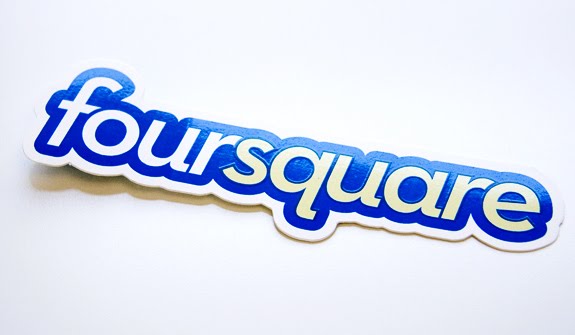Universities attempt to engage prospective students and parents, current students and alums in hopes of launching, developing and managing effective communities. In recent years, society has become digital; existing more and more in an online realm. However, with the sudden growth of Location-Based Services (LBS), technology has begun to merge reality with online activity.
Geo-Location
Geo-Location has become popular with the rise of the Smartphone. Using a combination of GPS technology, cell phone towers and WiFi connections, most modern devices can determine their exact location. Thus, enabling its users to publish his or her location to other users (their connections) and associate real-world locations that surround them (mountains, restaurants, historical locations, and of course, Universities).
Trends in Geo-Location
The most widely used Geo-Location application is Foursquare. The service, available on the iPhone, Android, Blackberry and Palm (OS) not only allows the user to advertise their most recent whereabouts, but creates a competitive atmosphere with a social game, played weekly. Simply put, if you “check-in” to a location, you earn points. Check-in to the same location the most, and you become the Foursquare Mayor. Each week, connections compete to earn the most points on the Leaderboard. After each check-in a Foursquare member can leave a “Tip” for future visitors of the same location; a college could leave suggestions around their campus and surrounding community.
SCVNGR, created by Seth Priebatsch, takes social gaming to a whole new level. His vision is to build a virtual game layer on top of the world. Institutions, like Universities, can build fun and creative challenges at their locations to engage with their visitors. Participants earn rewards for completing challenges. These activities can range from taking their picture with a statue, solving a riddle or completing a dare; regardless of the task, users interact with the host and publish their experience across their social networking profiles.
Popular social networking sites such as Facebook and Twitter have also integrated LBS into their services. Other competitors include Gowalla, Google Latitude, Brightkite, Loopt, and many others.
Why Universities?
“We have a strong alumni network.” “Our students engage in active communities.” “The professors are approachable and available to all students.” Universities strive to achieve campus wide camaraderie. As a recent Mashable post by Dan Klamm and Kelly Lux states, “Geolocation can have a real effect on education at the University level by building relationships with prospective students and families, engaging students with their course materials, and strengthening alumni bonds.”
Potential Students and Parents
Each year, current high school seniors and their families trek from college campus to the next, experiencing a tour of the grounds, briefly speaking with an admissions officer and sometimes experiencing a class/lecture as a guest. Geo-location technology can enrich a visitor’s contact with a University by providing incentives to check-in during his or her visit. Examples include sharing fun facts about a location on the campus, directions to the best coffee shop or the history of a student tradition that takes place around their current location.
Current Students
Whether a college is welcoming students to a campus, encouraging them to explore the surrounding community or promoting a local event, geo-location technology allows for integrating interactive tools, easily shared on social networking sites. Furthermore, as I have covered on my blog in the past, technology in education can enhance the experience and encourage participants to continue classroom discussions outside of a lecture hall.
Alumni Relations
A large percentage of donations result directly from alumni giving back to the college community they have come to love. With new technology, an alumni’s return to campus experience can become even more memorable. Leaving notes, strategically paced around campus on Foursquare can inform visiting alums of changes to the campus and new buildings as a direct result of their generosity.
Sharing Experiences
“Can you imagine a student going to a campus concert and being able to see photos and commentary from the perspective of dozens of other attendees in real time? Or an alum returning home from Alumni Weekend to view images from events of the momentous weekend as captured by hundreds of fellow alumni, neatly organized in one locations? Location-based services these have tremendous potential for universities.”
– Dan Klamm on Mashable
Conclusion
The entire college experience, similar to that of society, is changing with the introduction of new social technology. The structure of classroom lectures will become a mixture between in class seminars, online discussions and virtual experiences. Socializing will transform from face-to-face interactions to virtual meetings and online collaboration. The term, “University Without Walls” will possess a new meaning.
New technology is providing organizations with endless data, allowing for demographics and other analytics collected over multiple channels to determine future marketing efforts. Geo-location software will enable Universities a first look into the patterns of its visitors, students and alums, eventually allowing for improved interactions with their extended communities.
Examples

